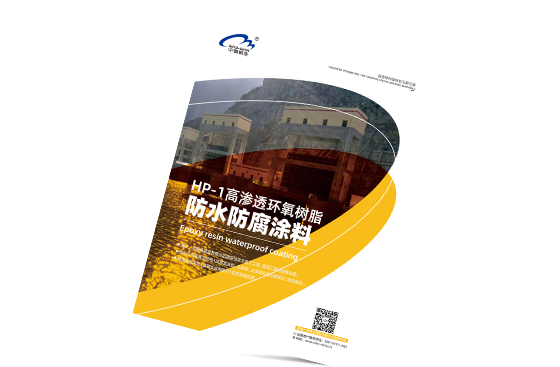How about a quick look at enhancing concrete surfaces with carbon fiber cladding?
Release Time:
2024-08-03 11:00
In the field of architecture, it is crucial to balance functionality and visual appeal. Concrete, as a basic building material, often lacks the elegance that many modern buildings demand. However, a revolutionary solution has emerged: carbon fiber cladding. This article takes a closer look at the intricacies of using carbon fiber cladding to enhance concrete surfaces and provides insight into its benefits, applications and implementation techniques. Giving you a clearer understanding of how carbon fiber can enhance the beauty and durability of concrete, making it a popular choice in contemporary construction.
Introduction to Carbon Fiber Cladding in Concrete Construction
Carbon fiber cladding offers a unique solution for enhancing the appearance of concrete surfaces while improving their performance. By incorporating carbon fiber into the construction process, a stunning visual effect can be achieved while also enhancing the structural integrity of the project.
The multifaceted benefits of carbon fiber cladding
1. Increased strength and durability
One of the main benefits of carbon fiber cladding is its ability to significantly increase the strength of concrete. When properly applied, carbon fiber can increase load-bearing capacity and provide resistance to cracking and deformation. This makes it an ideal solution for new construction and renovation projects.
2. Aesthetics
In addition to its functional benefits, carbon fiber cladding can add a sleek, modern look to concrete surfaces. Carbon fiber cladding is available in a wide range of finishes and colors, allowing architects and designers to incorporate sophisticated design elements according to the requirements of a specific project.
3. Lightweight properties
Carbon fiber is much lighter than traditional reinforcement materials. This characteristic makes it easier to handle and apply without compromising structural stability, making it a practical choice in complex construction scenarios.
4. Corrosion resistant
Unlike steel reinforcement, which can rust and corrode over time, carbon fiber is inherently resistant to environmental factors. This property ensures that concrete structures remain intact and aesthetically pleasing for a long time, reducing the need for costly repairs and replacements.
5. Wide range of applications
Carbon fiber cladding can be used in a wide range of applications, from residential buildings to commercial projects. The adaptability of Carbon Fiber Cladding makes it suitable for both interior and exterior finishes, thus expanding the range of applications in different building types.
Applications of carbon fiber cladding in construction
1. Structural reinforcement
One of the most common applications of carbon fiber cladding is structural reinforcement. It can be used to strengthen beams, columns and floor slabs, especially in older buildings that need to be retrofitted to meet modern safety standards.
2. Decorative facades
Architects often use carbon fiber cladding to create striking facades that resonate with contemporary design trends. The ability to mold carbon fiber into a variety of shapes allows for innovative architectural features that enhance a building's visual appeal.
3. Restoration Projects
In restoration projects, carbon fiber can effectively preserve historic buildings while increasing their durability. The application of carbon fiber minimizes the visual impact on the original design while greatly enhancing the structural integrity.
4. Infrastructure improvements
Bridges, tunnels and other infrastructure projects benefit from carbon fiber cladding because it helps to reinforce existing structures. This is especially important in earthquake-prone areas, as the added strength can prevent catastrophic failures.
Maintenance and longevity of carbon fiber cladding
Maintenance of carbon fiber cladding surfaces is relatively simple. Regular inspections are recommended to detect any signs of damage or wear. Cleaning the surface with mild detergents and avoiding abrasive materials will help maintain its appearance and integrity. With proper care, carbon fiber cladding can last for decades and is a worthwhile investment for any construction project.
Environmental Impact of Carbon Fiber Cladding
The environmental impact of carbon fiber cladding is an important consideration in modern building practices. Carbon fiber is a sustainable option because it typically requires less material than traditional reinforcement methods. Additionally, the long lifespan of carbon fiber reduces the frequency of replacement, ultimately minimizing waste.
The Future of Carbon Fiber in Construction.
The use of carbon fiber in construction is expected to expand as technology continues to advance. Innovations in production methods and materials science are likely to increase the efficiency and effectiveness of carbon fiber's use, further cementing its position as a cornerstone of modern building practice. Architects and construction workers are increasingly turning to carbon fiber as a solution to structural challenges and aesthetic needs, ensuring its utility for years to come.
Latest News
High-Performance Cement Additive Redefines Green Construction Materials with Unmatched Strength and Sustainability
Effortless Strength: The Advantages of Carbon Fiber Wrap for Concrete Applications Table of Contents 1. Introduction to Carbon Fiber Wrap 2. What is Carbon Fiber Wrap? 3. Benefits of Carbon Fiber Wrap for Concrete 3.1 Enhanced Durability 3.2 Lightweight Properties 3.3 Flexibility and Versatility 3.4 Cost-Effectiveness
Concrete is a widely used building material known for its durability and strength. However, over time, environmental factors, heavy loads, and general wear can lead to the deterioration of concrete surfaces. Effective concrete repair is crucial for maintaining structural integrity and extending the lifespan of concrete installations. This guide explores essential methods and considerations for pro
Elevating Aesthetics with UHPC Facade Solutions: Transforming Architectural Design Table of Contents 1. Introduction to UHPC Facade Solutions 2. What is Ultra-High Performance Concrete? 3. The Advantages of Using UHPC for Facades 3.1 Exceptional Durability and Longevity 3.2 Aesthetic Versatility and Design Freedom 3.3 Sustainability and Environmental Benefits 4. Applications of UHPC in Modern Arch
Carbon fiber wrap is an advanced material that has gained traction in various industries, including construction and decorative design. Its unique properties make it an ideal choice for applications where strength, lightweight characteristics, and aesthetic appeal are paramount. In this article, we will explore the benefits, uses, and considerations of carbon fiber wrap, particularly within the co
Product Documentation
If you do not have a comprehensive understanding of our products, we have uploaded relevant technical documents for you to download and reference so that you can better understand our product usage and technical parameters
View More

Online Message











